





|
|
The Methyl Xanthines
Caffeine is a member of a group of purine alkaloids (what's an alkaloid?) known as the xanthines or methyl xanthines. This group also includes theophylline, theobromine, and paraxanthine.
Lets start by considering purine.
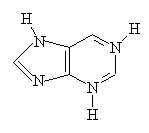
This crucially important compound is used in nature as the parent compound for adenine and guanine, two of the four basic constituents of the nucleotides that form DNA and RNA, the compounds of life itself. Every living cell of every living organism contains DNA and RNA. Purine is also the basis of ATP, nature's "energy currency".
The oxidation of purine by adding two oxygen atoms forms xanthine.
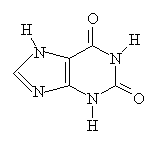
This now specifically forms the parent molecule for the methylxanthines. There are three pyrrole type nitrogens which can be N-methylated to form methylxanthines. Thus it follows that there are three possible dimethylxanthines, all of which are metabolically active in a similar fashion to caffeine, and these are as follows:
Theophylline, found in tea (0.3% by mass), and human metabolite of caffeine.
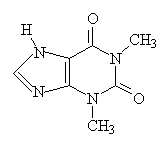
Theobromine, found in cacao (1.50% by mass) (lesser extent in tea and coffee), and human metabolite of caffeine.
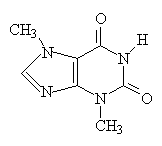
Paraxanthine, major metabolite of caffeine in humans (>70% of caffeine that has been consumed ends up as this compound).
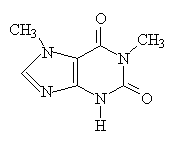
If all three available pyrrole type nitrogen atoms are methylated, the product is caffeine.
|
|